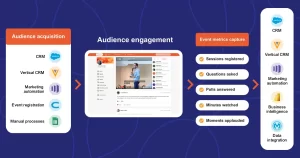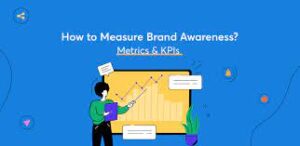IM Metrics: Tracking Visitors
The first thing to look at is the number of visits you are getting to your website. This metric in itself is not necessarily all that useful, seeing as it doesn’t necessarily provide much information regarding the type of person visiting your site, the way they’re engaging with your content or anything else.
What’s more, is that most websites will not see a visit as the ‘end goal’. If you are intending on building brand awareness, engagement and following, then you will need to reduce your bounce rate (see below). If you are trying to make money, then your ‘goal’ will be to increase your AdSense revenue, or to make more sales of your products.
Visits in itself is really just an aside!
Despite this though, you need to know your visits in order to make sense of all the other data that you’re getting. You need to know your visits so that you can know what percentage of those visitors are buying from you and thereby calculate your conversion rate. Your visits tell you how many people you have to work with and they let you formulate a strategy on that basis.
And if your main income comes from AdSense impressions (rather than clicks), then there is a very good chance that your number of visits is going to correlate pretty much directly with your overall revenue.When looking at

this metric though, it’s important to recognize the subtle distinctions between the different kinds of ‘hits’ and ‘visits’.
For example, you have both ‘visits’ and ‘unique visits’. In many ways, the latter is actually more useful as this uses cookies stored on your visitors’ computers in order to identify repeat visitors. So if you have one mega fan who visits your website 20 times a day, then your ‘unique visits’ metric will help you to compensate for that and give you a more useful number that is a better reflection of your site’s popularity.
Another thing to consider is the difference between ‘hits’ and ‘visits’. Hits are different from visits because they actually represent every single demand placed on your servers. This means each new visit to your site but it also means image that gets downloaded and might also include ‘bots’ (scripts that work for search engines and other sites as a way of indexing the content on your site).
This means that if someone were to link directly to one of your images and embed it on your page (which isn’t the done thing but it does happen!), then you would see a massive increase in your hits that wouldn’t necessarily tell you anything about how many people were actually reading your content.
So at the very least, you should look at visits rather than hits. And most likely you are going to want to look at your unique visits more than that. And even then, this metric is going to be most useful when used in conjunction with others. Nevertheless, this is your starting point and it is the first metric you need to track. It is the broadest and most general descriptor of your overall success and is definitely a useful number to watch.

Note: This is a good time for us to point out that none of these metrics is infallible and it is certainly possible to ‘fool’ the reports. For example, if someone is using private browsing on their computer, then they won’t be storing cookies and that means that they may be counted as a new visitor (although normally the IP address is also taken into account). If a user has multiple computers more likely, then this too can also upset your statistics.
How to Increase Your Vusuts
So how do you go about increasing your page visits? The first thing you are doing correctly is monitoring them and seeing how they increase, as this way you can now try to make changes and see how your site improves or doesn’t. This will then let you know what’s working, what you need to change and more.
There are numerous different ways to increase page views and basically the answer here is: marketing. These days, that can include:
-
- SEO
-
- Social media marketing
-
- Content marketing
-
- Advertising
The key is to create a synergy between all these things and have a strong brand that drives through all of them. Content is very much the key as unless you’re a big, well-recognized online store, this is what is going to give people a reason to come to your website and it is what Google is going to be able to index and use to decide where you should appear on the SERPs (Search Engine Results Page). Content builds trust and engagement and encourages your visitors to share your site on social media and it gives you something of value to offer on social media too.
From there, you can also focus on building inbound links to your site from reputable and trusted domains, as well as using influencer marketing by teaming up with other brands and site owners to increase your exposure.
The last element – advertising – of course means spending money on a CPC (cost-per-click) ad campaign, a banner or perhaps a video ad. This will bring its own set of metrics, which is something we’ll be looking at more further into this post.
